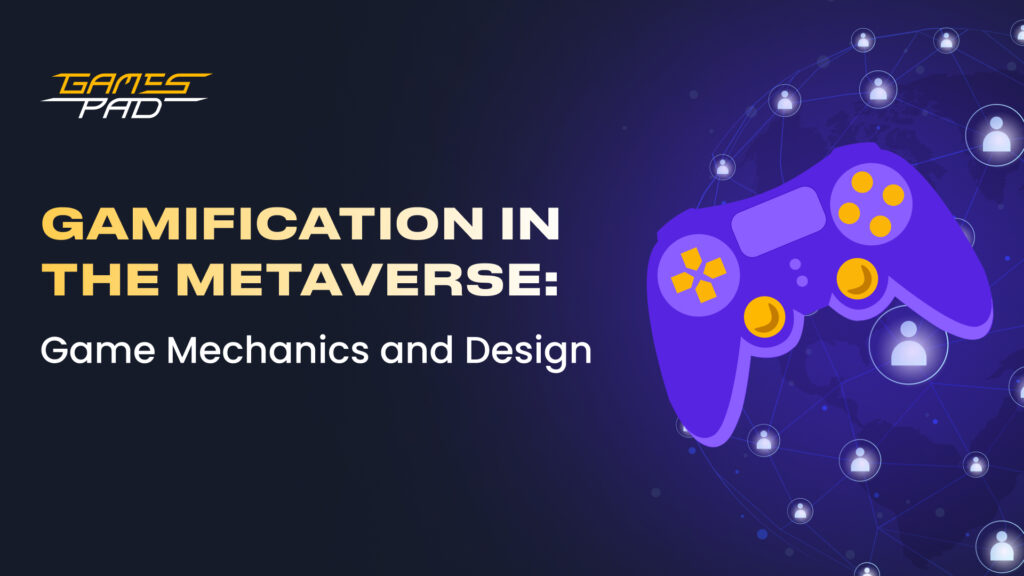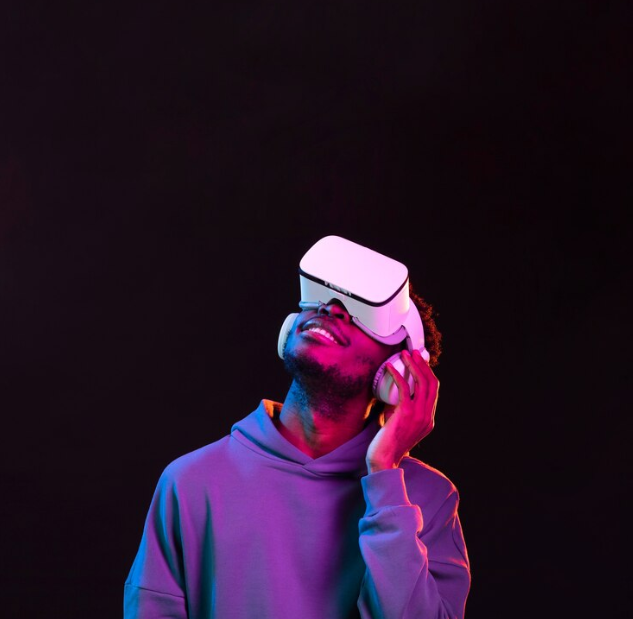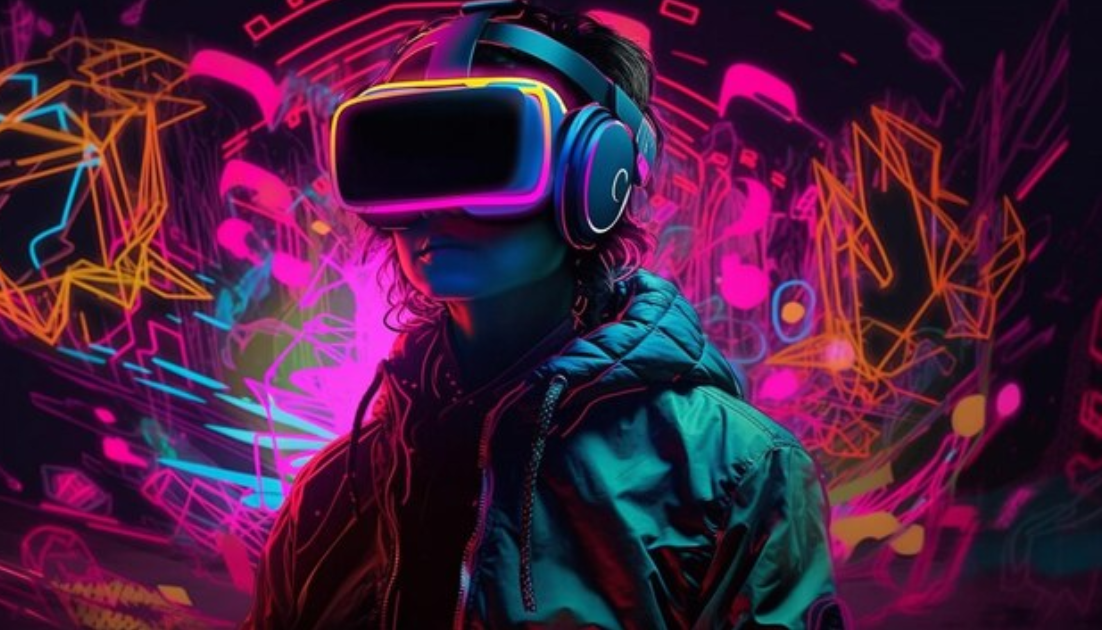
The metaverse, a collective virtual shared space combining aspects of social media, online gaming, augmented reality (AR), virtual reality (VR), and more, offers a unique opportunity to leverage gamification for various purposes. By applying the main gamification principles and leveraging the existing technologies, game developers can create environments and games with all economic and social elements that will serve to increase brand exposure and make players not only have fun while playing but also become an integral part of the metaverse ecosystem.

Source: Freepik
Gamification in the metaverse leverages virtual reality technology to serve as a powerful tool to enhance user engagement by incorporating game-like elements that capture and maintain the user’s attention. Interactive and rewarding experiences keep users immersed in the virtual environment, leading to longer and more frequent interactions.
Game mechanics, such as quests, challenges, and rewards, provide users with clear goals and motivations, promoting continued participation. The sense of achievement and progression encourages users to stay active in the metaverse over time.
Gamification fosters community building by encouraging social interactions and collaborations among users. Shared goals, leaderboards, and cooperative missions create a sense of belonging and camaraderie within the metaverse community.
Avatar customization and virtual goods enable users to express their individuality and creativity within the metaverse. Personalizing one’s virtual identity enhances the user experience and fosters a sense of ownership in the virtual space.
Gamification involves applying game design elements and principles to non-game contexts to enhance user engagement, motivation, and participation.
In the metaverse, users benefit from having clear objectives, whether it’s completing virtual quests, achieving milestones, or progressing in a narrative. Clear goals provide users with a sense of purpose and direction, fostering engagement and motivation.
The core principles of gamification are fundamental concepts that contribute to creating an immersive and interactive experience, and they are the following.
Specific, achievable goals to give users a sense of purpose and direction. Clear objectives provide motivation and focus, driving user engagement.
It is important to implement a system that allows users to progress through levels or tiers. Rewards, whether virtual items, privileges, or recognition, reinforce positive behaviors and encourage continued participation.
It is crucial to provide immediate and constructive feedback to users based on their actions. Feedback mechanisms help users understand their progress, celebrate achievements, and guide them in their journey.
Encouraging social engagement by facilitating interactions between users is crucial. Multiplayer experiences, group activities, and collaborative challenges enhance the sense of community within the gamified environment.
Creating interactive experiences is impossible without allowing participants to personalize their gamified experiences by customizing avatars, virtual spaces, or items. Personalization fosters a sense of ownership and identity within the gamified environment.
Engaging participants is possible when incorporating challenges, quests, or missions to provide users with a varied and dynamic metaverse experience. These activities create a sense of adventure, discovery, and accomplishment.
Establishing a virtual economy where users can buy, sell, and trade virtual goods in the form of non-fungible tokens is one of the core principles of gamification in the metaverse. By implementing this principle, you not only enhance the metaverse experience but allow active participants to earn rewards in the form of reward points for creative content generated by them, knowledge sharing, or other types of contributions to the metaverse economy.
The introduction of scarcity and value is one of the most important gamification tools that enhances not only the social aspect of the gamified environment but also the economic one.

Source: Freepik
A metaverse platform, being a virtual shared space combining elements of social media, gaming, artificial intelligence, and augmented reality, is an ideal environment for the application of gamification principles. Here’s why these principles are particularly relevant in the metaverse.
Gamification principles provide a framework to keep players engaged and motivated, fostering a sense of excitement and purpose not only within the expansive and dynamic metaverse but also in non-game environments.
Real gamification, with its narrative and progression elements, enhances the immersion within the metaverse and boosts the gamified experience. Players feel a deeper connection with other users as they complete tasks and progress through quests and storylines in a fun way.
Challenges, quests, and narrative elements ensure that the metaverse remains dynamic and ever-evolving. Players have a continuous stream of engaging content thus fostering positive emotions, preventing stagnation, and encouraging exploration.

Source: Freepik
To ensure the top gaming experience on a metaverse platform, game designers shall know not only the main gamification principles but also the ways how to apply them correctly and the technologies that may help to ensure their correct application. Here are some tips for designers to consider when creating games that can take leadership positions in the gaming industry.
Focus on user-centered design
Prioritize the needs and preferences of players in the design process. Understand players’ behaviors, expectations, and motivations within the metaverse to create experiences that resonate with the target audience.
Ensure accessibility and inclusivity
Ensure that the metaverse is accessible to players with diverse abilities and backgrounds. Consider factors such as ease of navigation, readability, and support for assistive technologies to make the metaverse inclusive for all.
Intuitive navigation
Implement intuitive navigation systems that allow players to easily explore and interact with the virtual space. Consider the use of teleportation, waypoints, or other navigation metaphors that align with the natural expectations of players and are applied in the branded games.
Consistent design language
Maintain a consistent design language and visual style across the metaverse. Consistency enhances player familiarity and helps players understand the functionality of different game elements within the metaverse.
User onboarding and tutorials
Create user-friendly onboarding processes and tutorials to guide new players through the functionalities of the metaverse. Provide interactive and engaging tutorials that help players acclimate to the environment.
Responsive design
Design spaces to be responsive to various devices and platforms. Consider the diverse ways players may access the metaverse, including VR headsets, AR devices, desktops, and mobile devices.
Clear Call-to-Actions (CTAs)
Ensure that players can easily identify and understand the actions they can take within the metaverse. Use clear CTAs, interactive elements, and visual cues to guide players and prompt desired interactions.
Social interaction design
Facilitate social interactions by designing spaces that encourage communication and collaboration. Implement features such as proximity-based audio, gestures, and expressive avatars to enhance social engagement.
Performance optimization
Prioritize performance optimization to ensure a smooth and lag-free experience. Minimize loading times, optimize game assets, and implement efficient rendering techniques to enhance the overall performance of the metaverse.

Source: Freepik
Intuitive navigation and interaction design contribute to user engagement by reducing friction and making it easy for players to explore and interact within the metaverse. Players are more likely to engage with a platform that offers a seamless and fun experience.
A well-designed user interface and navigation system contribute to user retention. Players are more likely to stay and explore a platform if they can quickly understand how to navigate and communicate without frustration.
Intuitive navigation and design reduce the learning curve for new players. This is particularly important in the metaverse, where players may have varying levels of familiarity with a video game.
Designing for accessibility ensures that the metaverse is inclusive, allowing players of all abilities to participate. An accessible design benefits a broader audience and contributes to a more diverse and vibrant virtual community.
As the metaverse spans various devices and platforms, an intuitive design ensures that players can seamlessly transition between different environments, maintaining a consistent and familiar user experience.
Well-designed interfaces and navigation systems reduce the cognitive load on players. The latter ones can focus on exploring and interacting within the space rather than struggling to understand complex controls or navigation methods.
In conclusion, prioritizing intuitive navigation, design, and user interfaces in the metaverse is crucial for creating a user-friendly, engaging, and accessible virtual environment. These design principles contribute to a positive user experience and play a significant role in shaping how users perceive and interact within the metaverse.
VR provides a fully immersive experience by transporting participants into a computer-generated environment. In the metaverse, VR enhances presence and engagement, allowing players to interact with branded games through headsets and controllers.
AR overlays digital information onto the real world, enhancing the player’s perception. In the metaverse, AR can blend the virtual world with the physical environment, offering context-aware valuable information through devices like AR glasses or smartphones.
3D modeling technologies enable the creation of realistic and detailed environments, avatars, and objects. This contributes to the overall visual fidelity of the metaverse, providing players with immersive and visually rich experiences.
Spatial audio enhances the sense of presence in the metaverse by replicating how sound behaves in the real world. Players can perceive audio sources from different directions, contributing to a more immersive and realistic virtual environment.
The following technologies are developing rapidly and can be used in games to create a feeling of reality in the metaverse.
Gesture recognition
Advances in gesture recognition technology enable players to interact with the metaverse using natural hand movements. This innovation enhances the intuitiveness and expressiveness of interactions and contributes to gamification.
Haptic Feedback Systems
Haptic feedback systems provide players with tactile sensations in response to their interactions within the metaverse. This innovation adds a sense of touch to experiences, increasing realism and immersion.
Brain-Computer Interfaces (BCIs)
BCIs allow players to interact with the metaverse using their brain signals. This emerging technology has the potential to revolutionize how people control and engage with the metaverse, opening up new possibilities for direct neural interaction.
Eye Tracking
Eye tracking technology monitors people’s eye movements, enabling more natural and responsive interactions. This innovation can be used for gaze-based navigation, dynamic depth of field, and enhancing social interactions through eye contact in a game.
Meta Quest 2
This standalone VR headset offers wireless freedom and high-quality VR experiences. It contributes to the metaverse by providing players with an accessible and immersive entry point into game environments.
Microsoft HoloLens 2
This is an AR headset that blends digital content with the real world. It enhances the metaverse by enabling players to interact with holographic elements in their physical space, fostering a seamless integration of virtual and real-world information.
Tesla Suit
This full-body haptic suit provides players with tactile feedback. It contributes to the metaverse by adding a sense of touch to virtual experiences, making interactions more realistic and engaging.
Integration of AI and Machine Learning
AI and machine learning algorithms will play a significant role in creating dynamic and adaptive virtual spaces within the metaverse. These technologies will personalize experiences, predict user behavior, and generate realistic simulations.
Advancements in Full Dive VR
Full Dive VR, where players can experience virtual worlds indistinguishable from reality, may become a reality with advancements in hardware, neural interfaces, and simulation technologies. This would represent a significant leap in immersive experiences that would make a game feel like real life.
Expanding connectivity and interoperability
The metaverse will evolve towards increased connectivity and interoperability, allowing players to seamlessly transition between different virtual spaces and experiences. Standardized protocols and frameworks will facilitate a more cohesive metaverse ecosystem.
Emergence of lifelike Avatars
Lifelike avatars powered by advanced AI and computer vision technologies will become more prevalent. These avatars will mimic users’ expressions, gestures, and emotions, enhancing the social presence and communication within the metaverse.
Quantum computing could revolutionize the simulation capabilities of the metaverse, enabling more complex and realistic virtual environments. This breakthrough could lead to unprecedented computational power for immersive experiences.
Advances in neurotechnology, including brain-computer interfaces, could redefine how users interact with the metaverse. Direct neural integration could offer unparalleled levels of control and immersion.
As immersive technologies advance, ethical considerations regarding privacy, consent, and the potential impact on mental health will become crucial. Striking a balance between technological innovation and responsible use will be imperative.
In conclusion, the continued evolution of immersive technologies is set to transform the metaverse, offering users increasingly realistic, interactive, and personalized experiences. As these technologies advance, they will shape the way individuals interact, collaborate, and create within the metaverse, leading to a future where virtual and physical realities are more closely intertwined.